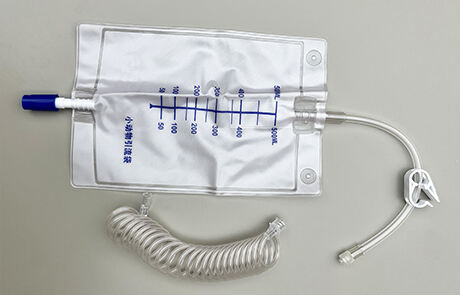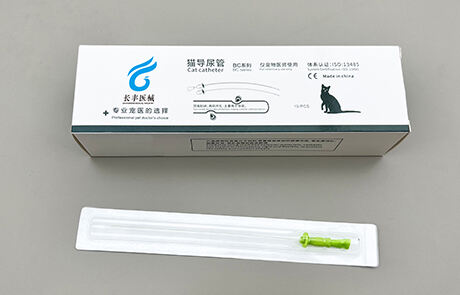
Difference between BC catheter and EC catheter for pets
I. Introduction
In the field of pet medicine, catheters are an indispensable tool in the management of urinary tract problems, especially in cases of urinary tract obstruction, urinary retention, or when a urine sample is needed for diagnosis.As the two common types of catheters, BC-type catheters and EC-type catheters, each has its own distinctive design and application advantages. This article will explore the differences between these two types of catheters in detail to help veterinarians and pet owners better understand their characteristics in order to make the most appropriate decisions when faced with a pet's urinary tract health challenges.
Ⅱ. BC catheters
Type BC catheters, also known as straight tip catheters, are the most basic type of catheter used in pet healthcare, and their key features include:
Simple design: BC catheters usually have a straight shape with a relatively straight head and no complex bending structure, making them suitable for pets with a straight urethra and no obvious bends.
Easy to operate: Due to its simple design, the BC catheter is relatively easy to insert, making it suitable for rapid urine collection or emergency urinary drainage.
Wide adaptability: Due to its simple structure, the BC catheter is suitable for pets of various body sizes and weights, including cats and small dogs.
Ⅲ. EC type catheter
EC-type catheters, usually designed with a more complex head structure to accommodate the natural curve of the pet's urethra, are characterized by the following features:
Curved design: EC-type catheters are designed with a specific bend in the head. This design helps the catheter pass more smoothly through the natural curve of the pet's urethra, reduces damage to the urethral wall, and improves the comfort and safety of insertion.
Strong targeting: EC catheters are particularly suitable for pets with significant curvature of the urethra, such as large dogs and certain cat breeds, allowing for more accurate positioning and insertion, reducing the difficulty of maneuvering and potential risks.
Long-term use: Due to its design that better adapts to the structure of the urethra, EC-type catheters can reduce irritation to the pet's urethra in cases where a long-term catheter needs to be left in place, making them suitable for pets with urinary retention or pets that require long-term management of urinary tract disorders.
Ⅳ. Choose BC type or EC type catheter
The choice of BC or EC catheter should be based on the pet's urethral anatomy, specific medical needs and veterinarian's professional advice. BC catheter is suitable for rapid urine collection or emergency urinary drainage when the urethra is straight and without obvious curvature; EC catheter is more suitable for pets with obvious curvature of the urethra or pets that need to retain a catheter for a long period of time, and it can provide a more comfortable and safer operation experience. .



